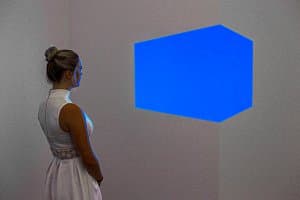- Overview
- Themes
- Works
-
Artists
- Albers Josef
- Andre Carl
- Arakawa
- Arneson Robert
- Baer Jo
- Baldessari John
- Bourgeois Louise
- Calder Alexander
- Castoro Rosemarie
- Close Chuck
- Cornell Joseph
- de Kooning Willem
- Flack Audrey
- Flavin Dan
- Frankenthaler Helen
- Gertsch Franz
- Gilhooly David
- Glarner Fritz
- Goldin Nan
- Gorky Arshile
- Guston Philip
- Held Al
- Hesse Eva
- Hofmann Hans
- Johns Jasper
- Judd Donald
- Kelly Ellsworth
- Kienholz Edward
- Krasner Lee
- Levine Marilyn
- Lewitt Sol
- Lichtenstein Roy
- Louis Morris
- Man Ray
- Mapplethorpe Robert
- Martin Agnes
- Morris Robert
- Motherwell Robert
- Nauman Bruce
- Newman Barnett
- Noland Kenneth
- Oldenburg Claes
- Ono Yoko
- Pollock Jackson
- Rauschenberg Robert
- Reinhardt Ad
- Resnick Milton
- Rothko Mark
- Ryman Robert
- Samaras Lucas
- Schueler Jon
- Shapiro Joel
- Sherman Cindy
- Smith David
- Smithson Robert
- Sonfist Alan
- Sonnier Keith
- Stackhouse Robert
- Stella Frank
- Still Clyfford
- Turrell James
- Warhol Andy
- Wilson Robert
- Tours
- Events
Light
During the twentieth century non-figurative or abstract modern sculpture replaced bronze monuments that memorialised heroes or captured portrait likenesses. From the 1960s—a decade that witnessed space travel, an upsurge in technology and discos with coloured lights, smoke and mirrors—the possibilities of sculpture expanded to include the most ephemeral of means: light. Painters of the nineteenth century had captured the effects of light, most famously the Impressionists, and the Futurists of the early twentieth century conveyed the impact of electric lighting on the modern city. But in making art using light itself artists such as Dan Flavin, Bruce Nauman, Keith Sonnier and James Turrell challenged the boundaries of three-dimensional practice and the definitions of sculpture.
Ready access to suitable material at low cost created a climate for experimentation, as artists explored the effects of different types of light and surfaces: neon, fluorescent tubes, projections, acrylic and even mirrors. The use of ‘readymade’ or off-the-shelf items such as bulbs or tubes links the works to Minimalism and Conceptual art, as well as Op art and Land art. The ‘Light and space movement’ is often used to describe those artists working on the west coast of the United States who were inspired by the radiant light and tempered atmosphere of California, as well as its car, surf and movie culture, to examine the effects of light on the viewer’s environment and perception.






